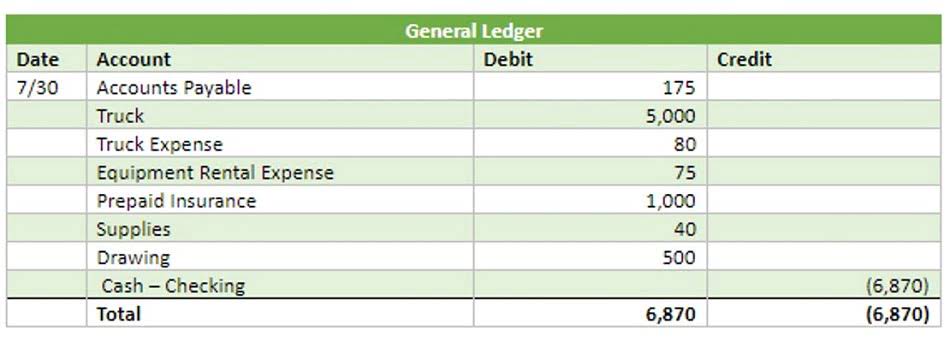
A favorable net working capital ratio is 1.5 to 2.0, depending on the industry the business is in. Therefore, to adequately interpret a financial ratio, a company should have comparative data from previous periods of operation or its industry. And then, we need to find the difference between the current assets and the current liabilities as per the net working capital equation. A positive amount indicates that the company has adequate current assets to cover short-term obligations. Explore the essentials of Net Working Capital in finance, its calculation, components, and its critical role in assessing liquidity and financing options.
Current Liabilities
- To mitigate such risks, companies often use cash flow forecasting to anticipate liquidity needs and adjust working capital strategies.
- This article examines various aspects of Net Working Capital, including its calculation, components, and implications on cash flow and financing options.
- However, the net amount is calculated by deducting the current liabilities form the assets, which gives a clear idea about the funds available.
- For example, a strong NWC position often correlates with a quick ratio above 1, indicating sufficient liquid assets like cash and receivables to cover immediate liabilities without relying on inventory.
- A company must keep its current ratio such that it can easily pay off its current liabilities.
- Therefore, companies needing extra capital or using working capital inefficiently can boost cash flow by negotiating better terms with suppliers and customers.
For example, if a company has $1 million in cash from retained earnings and invests it all at once, it might not have enough current assets to cover its current liabilities. As of March 2024, Microsoft (MSFT) reported $147 billion of total current assets, which included cash, cash equivalents, short-term investments, accounts receivable, inventory, and other current assets. A company’s balance sheet contains all working capital components, though it may not need all the elements discussed below. For example, a service company that doesn’t carry inventory will simply not factor inventory into its working capital calculation. However, the more practical metric is net working capital (NWC), which excludes any non-operating current assets and non-operating current liabilities. The net working capital (NWC) formula subtracts operating current assets by operating current liabilities.
Influence on Financing Options

However, it is Bookkeeping for Painters a very complex process, where the change in net working capital is more in case the company is bigger, covering a wider market and wide range of products and services. NWC is most commonly calculated by excluding cash and debt (current portion only). A high working capital turnover is good because it shows that the company is generating more revenue per $1 of investment.
Net Working Capital Formula (NWC)

In addition, the liquidated value of inventory is specific to the situation, i.e. the collateral value can vary substantially. Therefore, the impact on the company’s free cash flow (FCF) is +$2 million across both periods. Net working capital, often abbreviated as “NWC”, is a financial metric used to evaluate a company’s near-term liquidity risk.
It is calculated as the difference between the total current assets and the total current liabilities. Net Working Capital significantly impacts a company’s financing decisions, shaping its ability to secure funding and manage obligations. Lenders and investors closely examine NWC as an indicator of short-term financial stability. A healthy NWC signals that a company can manage its operations without excessive reliance on external financing, making it more attractive to creditors. For instance, companies fixed assets with positive NWC and efficient working capital management often secure loans at favorable interest rates, as they pose lower default risks. The relationship between Net Working Capital levels and cash flow significantly affects a company’s financial stability.
- While A/R and inventory are frequently considered to be highly liquid assets to creditors, uncollectible A/R will NOT be converted into cash.
- To boost current assets, it can save cash, build inventory reserves, prepay expenses for discounts, and carefully extend credit to minimize bad debts.
- Monitoring the accounts receivable turnover ratio, which measures how efficiently receivables are collected, provides additional insight into credit management effectiveness.
- Current liabilities include accounts payable, short-term notes payable, current tax payable, accrued expenses, and other short-term payables.
- However, current assets must not be too high relative to current liabilities so as to reduce working capital turnover which is a measure of a company’s asset utilization efficiency.
Expanding without taking on new debt or investors would be out of the question and if the negative trend continues, net WC could lead to a company declaring bankruptcy. Current liabilities include accounts payable, short-term notes payable, current tax payable, accrued expenses, and other short-term payables. Positive working capital generally means a company has enough resources to pay its short-term debts and invest in growth and expansion. Conversely, negative working capital indicates potential cash flow problems, which might require creative financial solutions to meet obligations. Another financial metric, the current ratio, measures the ratio of current assets to current liabilities. Unlike working capital, it uses different accounts in its calculation and reports the relationship as a percentage rather than a dollar amount.

For capital-intensive industries (e.g., manufacturing), a higher NWC is necessary, while low-margin, high-turnover industries (e.g., retail) can function effectively with lower or even negative NWC. Thus, both are equally important while evaluating net working capital equals the company’s financial condition.
This indicates the company lacks the short-term resources to pay its debts and must find ways to meet its short-term obligations. However, a short period of negative working capital may not be an issue depending on the company’s stage in its business life cycle and its ability to generate cash quickly. On the other hand, examples of operating current liabilities include obligations due within one year, such as accounts payable (A/P) and accrued expenses (e.g. accrued wages). Net working capital is a liquidity calculation that measures a company’s ability to pay off its current liabilities with current assets.
- Many companies use financial software to ensure their NWC figures reflect the latest financial data.
- NWC is most commonly calculated by excluding cash and debt (current portion only).
- To reiterate, a positive NWC value is perceived favorably, whereas a negative NWC presents a potential risk of near-term insolvency.
- Managing net working capital effectively will help ensure your business can pay its bills over the next year without hoarding excessive cash or inventory.
- It means that the company has enough current assets to meet its current liabilities.
- Net working capital differs from the current ratio because it provides a dollar amount rather than a percentage.
Working capital is calculated from the current assets (assets the company can sell or spend easily within one year) minus any upcoming debt payments due over the next year. Companies can forecast future working capital by predicting sales, manufacturing, and operations. Forecasting helps estimate how these elements will impact current assets and liabilities. To calculate working capital, subtract a company’s current liabilities from its current assets. Both figures can be found in public companies’ publicly disclosed financial statements, though this information may not be readily available for private companies. Current assets are those that can be converted into cash within 12 months, while current liabilities are obligations that must be paid within the same timeframe.




















